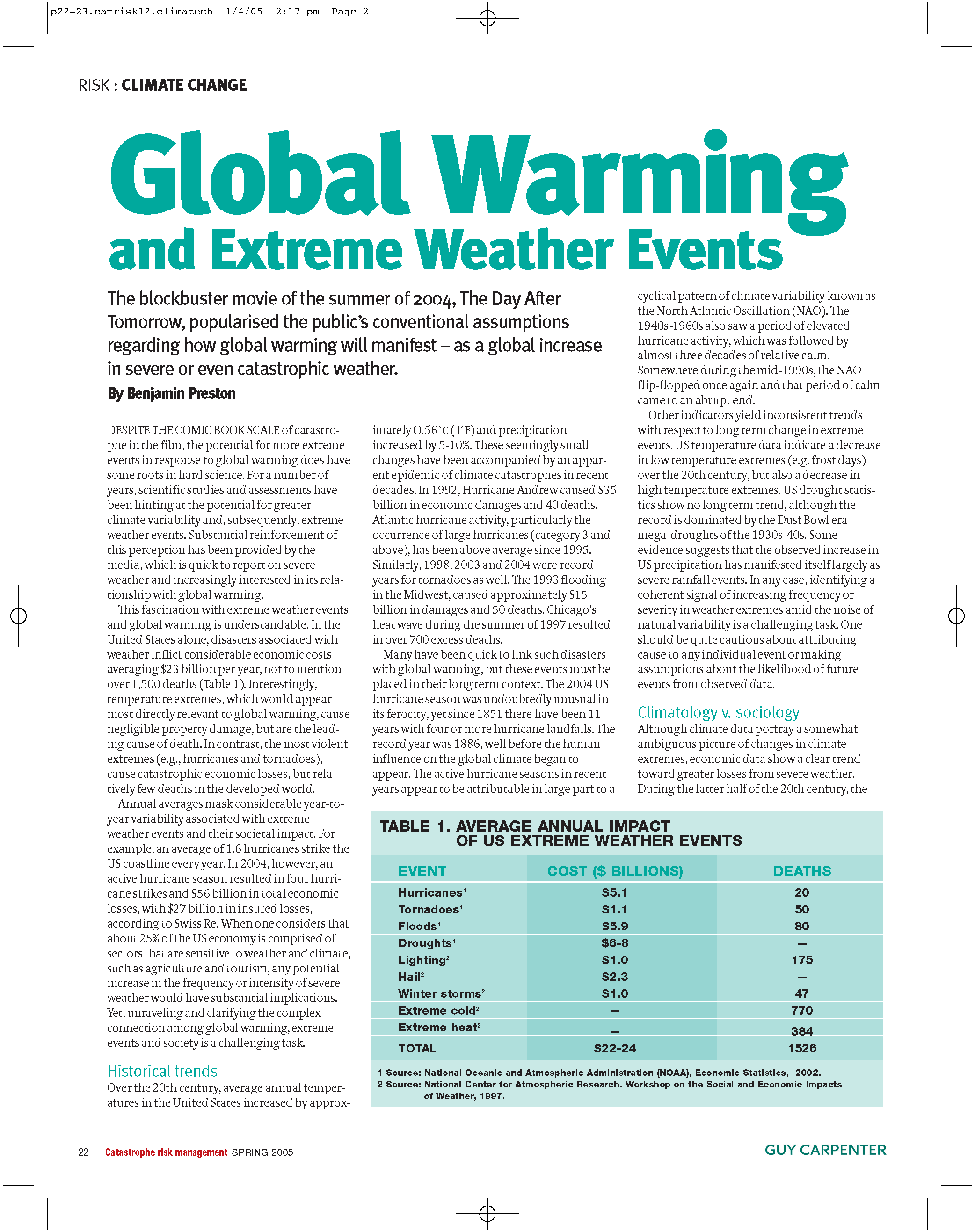Why Is Data Necessary For Predicting Global Weather And Environmental Events?
Understanding the intricacies of global weather patterns and environmental changes is no small feat. The ability to predict these phenomena with accuracy is essential for safeguarding lives, protecting ecosystems, and ensuring sustainable development. But what makes this possible? At the heart of it all lies data—massive amounts of it, collected from diverse sources and analyzed using cutting-edge technologies. From satellite imagery to ground-based sensors, every piece of information plays a role in constructing a comprehensive picture of Earth's systems. Without this data, predicting events like hurricanes, droughts, or rising sea levels would be akin to navigating a ship in a storm without a compass.
As climate change accelerates, the need for reliable predictions becomes even more urgent. Governments, scientists, and organizations rely on accurate forecasts to make informed decisions, allocate resources, and mitigate risks. For instance, early warnings about extreme weather events can save countless lives by enabling timely evacuations and emergency preparedness. Similarly, understanding long-term environmental trends helps policymakers craft strategies to combat climate change. But how exactly is this data gathered, processed, and utilized? And what challenges do we face in improving its accuracy and accessibility?
This article dives deep into the world of meteorology and environmental science, exploring the tools, techniques, and technologies that make predictions possible. We’ll also examine the role of artificial intelligence, satellite networks, and international collaborations in advancing our understanding of the planet. By the end, you'll have a clearer picture of why data is not just helpful but absolutely necessary for predicting global weather and environmental events.
Read also:Sara Saffari The Inspiring Journey Of A Rising Star
Table of Contents
- What Are the Key Data Sources Necessary for Predicting Global Weather and Environmental Events?
- How Does Satellite Technology Contribute to Data Collection?
- Why Is Ground-Based Monitoring Important?
- What Role Does Artificial Intelligence Play in Weather Prediction?
- How Do International Collaborations Enhance Prediction Accuracy?
- What Are the Challenges in Data Collection and Analysis?
- How Can Citizens Contribute to Environmental Data Gathering?
- What Is the Future of Weather and Environmental Event Prediction?
What Are the Key Data Sources Necessary for Predicting Global Weather and Environmental Events?
Predicting global weather and environmental events requires an intricate web of data sources working together seamlessly. These sources span various domains, including space-based observations, terrestrial measurements, and human-generated data. Let’s break down each category to understand their unique contributions.
Satellite Networks: Satellites orbiting Earth provide invaluable data on atmospheric conditions, sea surface temperatures, and cloud formations. Instruments like radiometers and spectrometers capture detailed images and measurements that form the backbone of modern meteorology. For example, NASA’s GOES-R series satellites monitor hurricanes in real-time, offering critical insights into storm intensity and trajectory.
Ground-Based Sensors: Weather stations, buoys, and radars scattered across the globe collect localized data such as temperature, humidity, wind speed, and precipitation. This information complements satellite data, filling gaps where remote sensing may be less effective. For instance, Doppler radar systems are instrumental in tracking tornadoes and severe thunderstorms.
Human Observations: While technology dominates data collection, human observations remain vital. Meteorologists and citizen scientists contribute qualitative data, such as visual reports of cloud types or unusual weather phenomena. Crowdsourced platforms like mPING (Meteorological Phenomena Identification Near the Ground) allow users to report real-time weather conditions, enriching datasets.
Why Is Oceanic Data Crucial?
Oceans play a pivotal role in regulating Earth’s climate, making oceanic data indispensable for accurate predictions. Sensors deployed on buoys and ships measure parameters like salinity, currents, and temperature. These readings help scientists understand phenomena such as El Niño and La Niña, which significantly impact global weather patterns.
How Does Historical Data Enhance Predictive Models?
Long-term records of past weather events and environmental changes serve as benchmarks for predictive models. By analyzing decades of data, researchers can identify trends, anomalies, and recurring patterns. This historical perspective is particularly useful for forecasting extreme events like heatwaves or floods, which often follow cyclical behaviors.
Read also:Emily Osment A Comprehensive Look At Her Life Career And Legacy
How Does Satellite Technology Contribute to Data Collection?
Satellites have revolutionized the field of meteorology, providing unparalleled access to Earth’s atmosphere and surface. Their ability to capture high-resolution images and precise measurements from space has transformed how we monitor and predict weather and environmental events.
Types of Satellites: There are two primary types of satellites used in weather prediction—geostationary and polar-orbiting. Geostationary satellites remain fixed over a specific location, offering continuous coverage of large regions. They are ideal for tracking fast-moving systems like hurricanes. Polar-orbiting satellites, on the other hand, circle the Earth from pole to pole, capturing detailed snapshots of smaller areas. Together, they create a comprehensive view of global weather dynamics.
Advanced Instruments: Modern satellites are equipped with sophisticated instruments like infrared sensors, microwave sounders, and lidar systems. These tools detect subtle changes in temperature, moisture, and atmospheric composition. For example, infrared sensors can identify temperature gradients that signal the formation of tropical storms.
What Role Do Satellites Play in Climate Research?
Beyond weather forecasting, satellites contribute to climate research by monitoring long-term trends. They track melting ice caps, rising sea levels, and deforestation rates, providing evidence of human-induced environmental changes. This data is crucial for developing policies aimed at mitigating climate change impacts.
How Are Satellites Used in Disaster Management?
In the aftermath of natural disasters, satellites provide critical support for emergency response efforts. High-resolution imagery helps assess damage, plan rescue operations, and allocate resources efficiently. For instance, during wildfires, satellites map affected areas, guiding firefighting teams and evacuation plans.
Why Is Ground-Based Monitoring Important?
While satellites offer a bird’s-eye view of Earth, ground-based monitoring provides the fine details needed for accurate predictions. This dual approach ensures that no aspect of the environment goes unnoticed, creating a robust framework for understanding complex systems.
Weather Stations: Automated weather stations are deployed worldwide, collecting data on temperature, humidity, wind speed, and barometric pressure. These stations operate 24/7, transmitting real-time updates to meteorological agencies. Their localized data helps refine regional forecasts and improve accuracy.
Radar Systems: Doppler radar is a cornerstone of ground-based monitoring, especially for tracking precipitation and storm systems. It detects raindrops and snowflakes, determining their size, speed, and direction. This information is vital for issuing timely warnings about severe weather events.
What Are the Limitations of Ground-Based Data?
Despite its advantages, ground-based monitoring has limitations. Remote or inaccessible regions often lack sufficient coverage, leading to data gaps. Additionally, equipment maintenance and calibration require significant resources, posing challenges for developing countries.
How Are New Technologies Enhancing Ground-Based Systems?
Emerging technologies like IoT-enabled sensors and drones are bridging gaps in traditional ground-based networks. IoT devices can be deployed in hard-to-reach areas, transmitting data wirelessly to central databases. Drones equipped with cameras and sensors provide aerial views of disaster zones, supplementing radar and satellite data.
What Role Does Artificial Intelligence Play in Weather Prediction?
Artificial intelligence (AI) is transforming weather prediction by enabling faster and more accurate analyses of vast datasets. Machine learning algorithms process complex patterns and correlations that would be impossible for humans to decipher manually.
Predictive Modeling: AI-powered models simulate weather scenarios based on historical and real-time data. These simulations account for multiple variables, such as wind patterns, ocean currents, and atmospheric pressure. The result is highly precise forecasts that adapt dynamically to changing conditions.
Pattern Recognition: AI excels at identifying recurring patterns in large datasets. For example, it can detect early signs of a developing hurricane or predict the onset of a heatwave. This capability enhances lead times for warnings, giving communities more time to prepare.
Can AI Replace Human Meteorologists?
While AI is a powerful tool, it cannot fully replace human expertise. Meteorologists interpret AI-generated insights, applying contextual knowledge and experience to refine predictions. This collaboration ensures that forecasts are both scientifically sound and practically useful.
What Are the Ethical Concerns Surrounding AI in Weather Prediction?
The use of AI raises ethical questions, particularly regarding data privacy and algorithmic bias. Ensuring transparency in how AI models are developed and validated is essential to maintaining public trust. Moreover, equitable access to AI-driven predictions must be prioritized to avoid widening disparities between developed and developing nations.
How Do International Collaborations Enhance Prediction Accuracy?
Weather and environmental events transcend national borders, necessitating global cooperation. International collaborations pool resources, expertise, and data, creating a unified effort to tackle shared challenges.
Data Sharing: Countries exchange satellite imagery, radar data, and climate models through organizations like the World Meteorological Organization (WMO). This collective approach ensures comprehensive coverage and minimizes blind spots in monitoring.
Joint Research Initiatives: Multinational projects focus on advancing predictive technologies and addressing climate change. For example, the European Union’s Copernicus program combines satellite data with AI to deliver cutting-edge environmental insights.
What Are the Benefits of Global Partnerships?
Collaborative efforts lead to faster innovation, improved accuracy, and cost efficiency. By sharing responsibilities, countries can invest in specialized areas, avoiding duplication of efforts. Furthermore, partnerships foster goodwill and strengthen diplomatic ties.
What Challenges Do International Collaborations Face?
Despite their advantages, international collaborations encounter obstacles such as political tensions, funding disparities, and differing priorities. Overcoming these challenges requires strong leadership, clear communication, and a commitment to shared goals.
What Are the Challenges in Data Collection and Analysis?
While the importance of data is undeniable, collecting and analyzing it presents numerous challenges. Addressing these issues is crucial for improving the reliability of weather and environmental predictions.
Data Gaps: Incomplete coverage in remote regions hampers the accuracy of global models. Expanding sensor networks and leveraging new technologies can help bridge these gaps.
Data Quality: Ensuring the accuracy and consistency of collected data is essential. Calibration errors, equipment malfunctions, and human mistakes can compromise results, necessitating rigorous quality control measures.
How Can We Address Cybersecurity Risks?
With increasing reliance on digital systems, protecting data from cyber threats is paramount. Implementing robust security protocols and educating stakeholders about best practices can mitigate risks.
What Are the Economic Implications of Data Collection?
Investing in data infrastructure requires substantial funding, which may strain budgets, especially in low-income countries. International aid and public-private partnerships can help alleviate financial burdens.
How Can Citizens Contribute to Environmental Data Gathering?
Engaging the public in data collection empowers communities and enhances the scope of environmental monitoring. Citizen science initiatives leverage collective efforts to gather valuable information.
Mobile Apps: Platforms like iNaturalist and Zooniverse allow users to document wildlife sightings, track invasive species, and report unusual weather patterns. This crowdsourced data supplements professional research.
Community Projects: Local initiatives, such as river cleanups or air quality monitoring, foster awareness and accountability. Participants learn about environmental issues while contributing to meaningful datasets.
What Are the Benefits of Citizen Science?
Citizen science democratizes data collection, making it inclusive and participatory. It also fosters a sense of ownership and responsibility among participants, encouraging sustainable practices.
What Are the Limitations of Citizen-Generated Data?
While valuable, citizen-generated data may lack standardization and accuracy. Training programs and clear guidelines can address these concerns, ensuring data quality remains high.
What Is the Future of Weather and Environmental Event Prediction?
The future of weather prediction lies in integrating advanced technologies, fostering global cooperation, and engaging the public. As innovations continue to emerge, our ability to anticipate and respond to environmental challenges will only improve.
Quantum Computing: Quantum computers promise unprecedented computational power, enabling real-time simulations of complex systems.
Costco Pools: Everything You Need To Know About Affordable Luxury
Exploring The Listings: A Comprehensive Guide To Maximizing Your Potential
What Threats Do Foxes Face: Understanding The Challenges To Their Survival?

Predicting Extreme Weather Events Foresight

Global Warming and Extreme Weather Events Center for Climate and